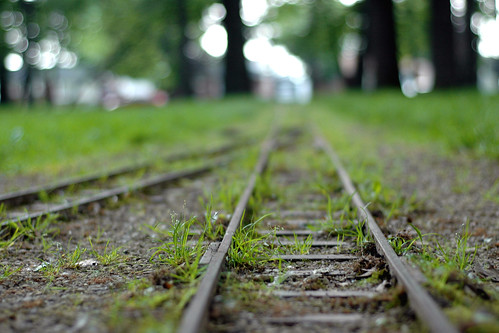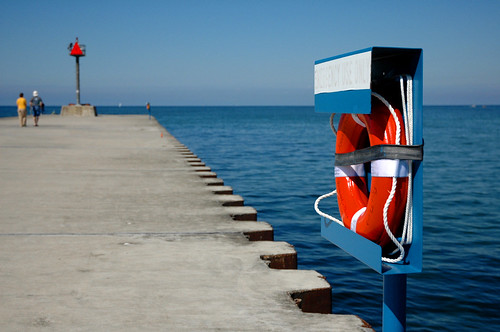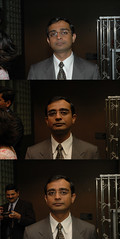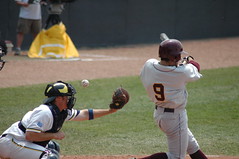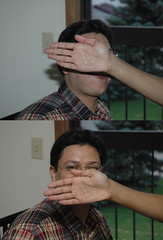Vignetting
With older cameras and cheaper cameras, you may see this effect of black corners. This is known as vignetting. It is caused by light falloff from the center of the negative, and is usually the result of the lens. However, it can also be used for photographic effect.
See in the above image how the subjects are emphasized by the darkening of the corners.
There are lots of different ways that you can achieve this technique. One is the camera itself. Using 'toy cameras' will often give this image without any effort. It can also be done in the darkroom by dodging and burning (under or over exposing parts of a shot). Digitally, suites like Photoshop have dodging and burning tools.
However, the trick to vignetting is figuring out when to use it, and that's a lot harder to figure out. Portraiture makes sense though, and I think the above example works well.
See in the above image how the subjects are emphasized by the darkening of the corners.
There are lots of different ways that you can achieve this technique. One is the camera itself. Using 'toy cameras' will often give this image without any effort. It can also be done in the darkroom by dodging and burning (under or over exposing parts of a shot). Digitally, suites like Photoshop have dodging and burning tools.
However, the trick to vignetting is figuring out when to use it, and that's a lot harder to figure out. Portraiture makes sense though, and I think the above example works well.

